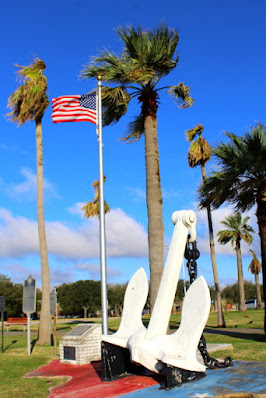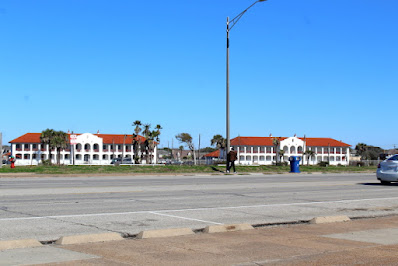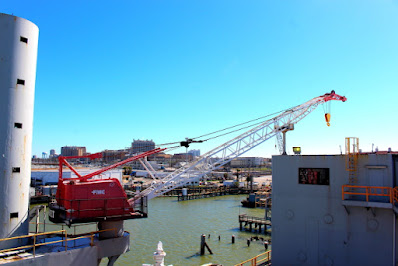In 1913, half of all the US Army forces were deployed to Texas City to guard the gulf coast against any threats from the Mexican Revolution. The Wright brothers trained over a dozen soldiers as military pilots as part of the 1st Aero Division; thus, Texas City became the birthplace of what would become the United States Air Force. Although the aero squadron did not see any military action while at Texas City, the pilots set several aircraft speed and distance records. There are a number of displays and information kiosks at Bay Street City Park that give a history of the military while in Texas city.
By the 1920s, Texas City had grown and included a sugar refinery, fig processing plant, large grain elevators, two cotton compressing facilities, and two refineries producing gasoline. Texas City soon became the fourth-ranked seaport in Texas, exceeded only by Houston, Beaumont, and Port Arthur.
In the 1930s, the Texas City shipping channel was being filled with silt from land activities and the channel required constant dredging to keep the waters navigable. To solve the silt problem, a 5.2-mile-long Texas City Dike was constructed using tumbled granite blocks. The dike is now known as "the world's longest man-made fishing pier."
On April 16, 1947, the French-owned ship Grandcamp was being loaded with ammonium nitrate fertilizer when it exploded in the harbor. The explosion ignited the SS High Flyer and the Wilson B. Keene that were moored in the adjacent slips and also loaded with ammonium nitrate fertilizer. This was the largest non-nuclear explosion in U.S. history and the worst industrial accident in United States history. 581 people were killed in the explosion and over 5,000 people were injured. The blast was so great that it was heard 150 miles away and caused a 15-foot tidle wave in the harbor. Some of the people not killed by the blast were killed by the tidle wave. Windows were blown out of buildings 40 miles away and the area around the explosion site was destroyed for miles in every direction. A 2,000-foot mushroom cloud rose from the explosion and destroyed two small airplanes flying in the area. The entire Texas City and Port Terminal Fire departments were wiped out. Texas City was rebuilt after the accident and became known as "the city that would not die."
One of the anchors from the Grandcamp and the propeller from the SS Highflyer were found 1/2 mile from the explosion site and are now on display in Anchor Park.
Of the people killed in the explosion, 444 people were confirmed dead and over 150 bodies were never found. The remains of 63 people killed in the explosion that could not be identified were buried at a plot of land that was dedicated as Memorial Park. No one else will ever be buried at this cemetery.
A second anchor from the Grandcamp that weighed over 3,000 pounds was found 1.62 miles from the explosion site and created a hole 10-feett deep when it landed. The anchor and other memorials are now on display in Memorial Park.
The offshore oil drilling rig Ocean Star is now a museum located just off 20th Street in Galveston. Upon entering the rig there is an introductory film and then the rest of the tour is self-guided. Several docents were located throughout the platform to explain the complexities of drilling for offshore oil. There were also displays about the many different types of drilling rigs and the high-tech equipment now in use. After touring the three-story museum, visitors can walk around the rig for a close-up look at the equipment.









































Looks like you had a great trip. I enjoyed.
ReplyDelete